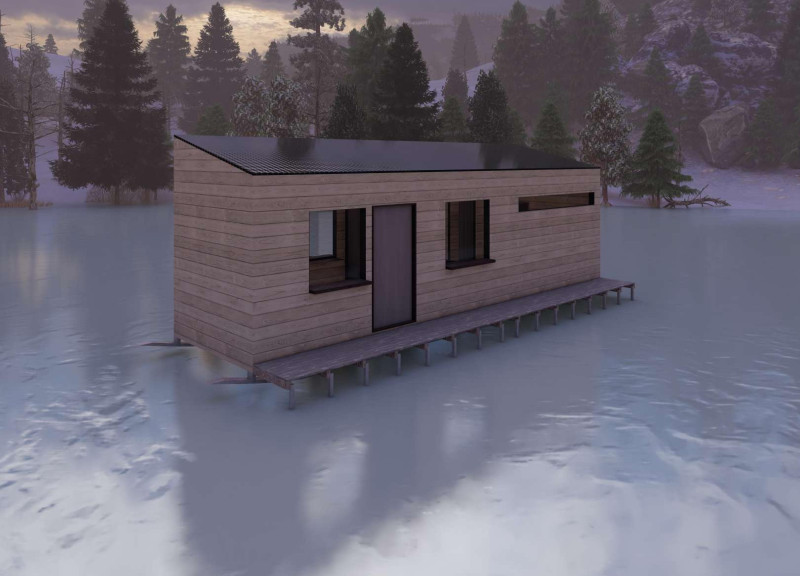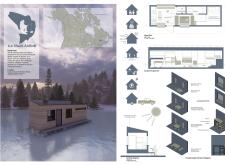5 key facts about this project
The Ice Shack Airbnb is a transportable microhouse designed for two main purposes: facilitating ice fishing on the Saguenay River during winter and serving as an Airbnb for summer tourists. This design meets the specific needs of its environment while emphasizing utility in a compact space. The project merges functionality with the seasonal demands of its location.
Spatial Organization
The layout includes vital spaces such as a Mechanical Room, Restroom, Kitchen, Fishing Zone, and Dining Area. The arrangement supports efficient movement and accessibility, ensuring that users can experience both fishing and comfortable living without feeling cramped. Each area is thoughtfully positioned to maximize the usability of the available footprint.
Adaptive Features
A notable element is the integration of fishing holes within the flooring. This feature gives users direct access to the river below, enhancing the practical experience of ice fishing. The design also uses convertible furniture effectively. Benches can be flattened against the walls when not in use, and tables rest flat on the floor, making the most of limited space while allowing for flexibility in how areas are utilized.
Sustainable Design
The house includes south-facing solar panels to capture energy efficiently, aligning with modern standards for sustainable living. This feature is particularly important for a structure that is expected to be utilized year-round. The subfloor contains storage solutions like closets and shelves, adding to the organization and functionality, which are crucial for small living spaces.
Innovative Living Solutions
The Ice Shack Airbnb serves as a practical example of modern micro-living by fitting many functions into a small area. The perforated metal ladder provides access to upper areas while keeping the design visually appealing. Users can lower benches for dining, further highlighting the adaptable nature of the microhouse.
The fishing zone stands out as a key feature, providing a direct connection to the natural surroundings, allowing for leisure and utility in a single space. Each design detail contributes to a cohesive living experience that responds effectively to its environment.



















































